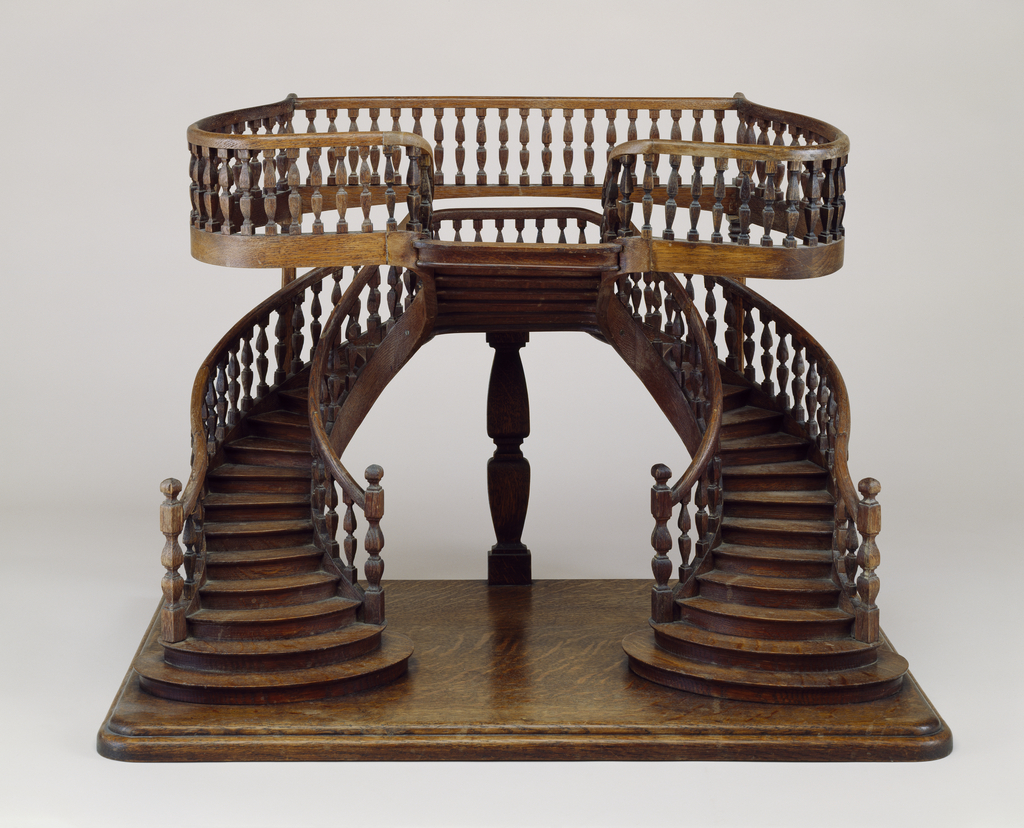This model, like some of the others in the Cooper Hewitt collection, is from the compagnonnage tradition in France that taught design through drawing and model making. The degree of complexity of the curved and bentwood framing of the staircase itself, combined with the second level that reverses itself rising to a balcony, make this an impressive work that goes beyond the necessities of a design project of a double revolution. In fact, it does conjure up a grand department store, which invited people to feel the grandeur of size and the occasion of shopping.
Some of the department stores of Paris and other major urban centers in France during the mid-late nineteenth century, did have such staircases, and either the staircases were published or published designs served as sources for both the stores and models. A folio of designs by E. Delbrel in the Cooper Hewitt library published in Paris in the 1880’s depicts a very similar staircase as being “in Renaissance style” in plate 17.
One thing that is interesting about this exacting design, with its almost serpentine shape to the actual flight of steps, is that the balusters on the bannister and balcony railing are carved of oak. Oak is very durable and very hard. It is not the ideal wood for carving such small shapes, in such detail, but would be a very likely candidate for a strong floor and large newel posts at the end of the railings. The maker shows himself perhaps more concerned than most model makers who were working in the furniture-making arts, about the practical aspect of what the full-size staircase might need, such as durable floors and treads, and strength to be placed in a large structure. In fact, the oak is sufficiently heavy, that the model only supports its free-hanging balcony tier with difficulty, wanting to pull down with its weight on one side, and needing to be supported by a post.
This sort of choice reveals a good deal about the maker, and, perhaps, the intention of the project. The maker clearly understood the elegant lines possible in drawings and realizable in the curves of the bannister railings and supports even though he tried this in the most difficult wood with which to do this. Perhaps this model did serve as a presentation of a design for a full-scale project, but it works just as well to see it as a model executed for the challenge of achieving such a complex design in its own right.
This staircase model will be on view beginning December 12th in the Models & Prototypes Gallery, one of Cooper Hewitt’s opening exhibitions.
Sarah Coffin is the Head of the Product Design and Decorative Arts Department at Cooper Hewitt Smithsonian Design Museum. She curated, among other exhibitions, Made to Scale: Staircase Masterpieces The Eugene and Clare Thaw Gift.

One thought on “Descending the Stairs in a Grand Manner”
Barbara on May 26, 2015 at 3:48 pm
Please can you tell me where I could buy one like this for my doll house? I cannot afford the real thing. Thank-you! Barbara